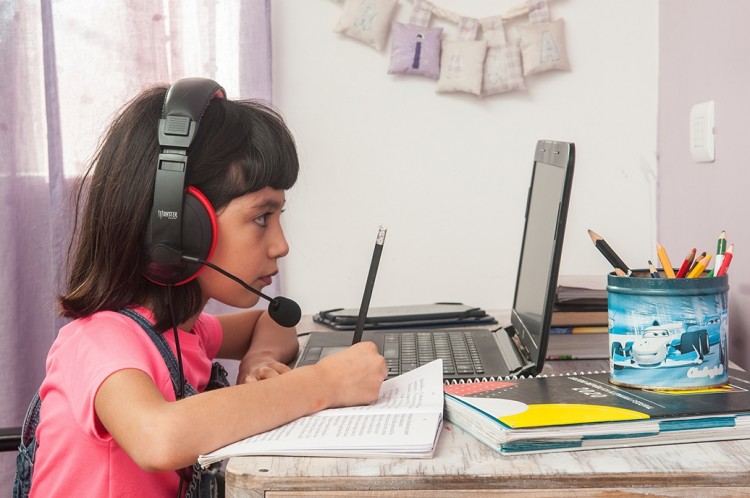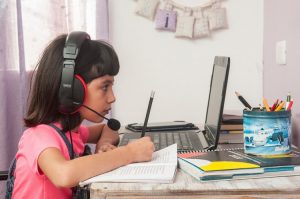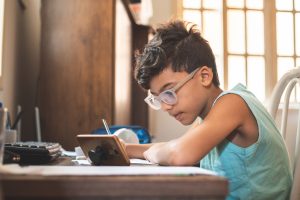New Normal at schools – the future of digital education


To ensure access to education even in times of COVID-19 and to implement new digital learning formats, Siemens Stiftung has launched the educational initiative “STEM Education for Innovation” with the support of Siemens Caring Hands. Five teachers share their experiences and perspectives on how digital education can succeed in the future.
Whilst the children here are excited to return to the classroom, in some countries it’s not defined yet what the #NewNormal will look like. The Covid-19 pandemic has made a huge difference in the working lives of teachers and, unlike any other crisis before, it has demonstrated the need for innovative teaching methods and new approaches to schooling. Teachers had to find ways to maintain contact with their students and ensure an ongoing education.
To help overcome technical hurdles and implement new digital learning formats, the Siemens Stiftung set up the “STEM-Education for Innovation” initiative in Latin America. Since December 2020, a number of projects has been implemented and innovative teaching and learning materials have been made available that are now seeing heavy use in kindergarten and school classrooms. Five teachers share their stories of how the pandemic changed their working lives in the #STEMeducation4innovation interview series. Find all stories here.
1. María Marcela Vargas Fernández, Escuela República de Brasil in Santiago, Chile
“ It’s ‘full Zoom’ for us this year. Unfortunately, my school did not purchase a license, so we are working with the free Zoom version. This means our lessons are at most 40 minutes long. While this may seem like a very long attention span for five- to six-year-olds, we were surprised to discover that as the months went by, more and more children started to log on. The screen is a hive of activity, the classes are incredibly interactive. Very often, the children would like to stay together online for much longer – these days, this simple audio-video communication really does enable genuine social contact, which is so important.“
2. Emma Janelle UC Artigas, educational consultant and coordinator for teachers in the Secretariat of State for Elementary Education of the Ministry of Education of Veracruz, Mexico
”Not all teachers had access to all technologies, and the same was true for their students. I found it remarkable that even as the teachers dealt with the pandemic’s impact on their own lives, they were mostly focused on how they would continue to teach under the new circumstances, and how they would continue to reach and support their students. Even in the worst times, they asked: How can I stay in contact with my class? What can we do to make sure everyone can learn in this new environment?“
3. Jessica Espinoza Fuentes, teacher at Liceo Eugenia Subercaseaux in San Sebastián, Chile
„I have 37 students, and we have yet to meet in person at the school – they are all still closed due to the pandemic health regulations. Instead, I connect with the eight to nine-year-olds online.Not all of my students have access to the internet, but they are increasingly getting online with their own mobile phones or by borrowing one from their parents. I spent the first weeks asking acquaintances if they had computers or mobile phones that they could donate. I also got the city to provide mobile access to the internet.“

4. Irene del Carmen Santos Cruz, teacher at Telesecundaria Adalberto Tejeda in La Estanzuela, Mexico
„ I asked my students to present their results. They used a lot of different tools and platforms for their research – that really took me by surprise. I didn’t expect that they would know how PowerPoint or similar programs work. I always tell my students: At your age, if you can use technology, you can do anything you want: have a career, pursue a bachelor’s or master’s degree, or even go for a PhD. Education means the world is yours.“
5. Selene Esparza, secondary school teacher for remote communities in the state of Zacatecas, Mexico
„At the start of the pandemic, I tried to send my students instructions for the lessons via text message. But there was no signal where they were. The teenagers had to walk to certain spots in a nearby field and hold their phones in the air to get connectivity. I didn’t know what to do in the beginning. How could I motivate the children and young people to learn when I rarely had the opportunity to meet them in person? For my own safety and that of the students, I no longer traveled to the village every day, going every two weeks instead. But I had to go there. Otherwise, the young people in these remote regions, closed off from the outside world, would have no access to learning materials.“
More information about other projects and initiatives can be found on the overview page.
